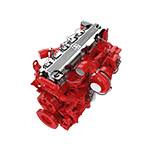Nov . 15, 2024 11:45 Back to list
disc brake drum brake
Disc Brake vs. Drum Brake An Overview
When it comes to vehicular braking systems, the choice between disc brakes and drum brakes has long been a point of discussion among automotive enthusiasts and professionals alike. Both systems are designed to provide reliable stopping power, but they operate differently and have unique advantages and disadvantages. This article aims to provide a comprehensive overview of disc and drum brakes, enabling readers to understand their differences and applications effectively.
Mechanism of Operation
Disc Brakes Disc brakes feature a rotating disc or rotor attached to the wheel. When the driver applies the brake pedal, hydraulic fluid engages calipers that grip the rotor with brake pads, generating friction and slowing the vehicle. This system is known for its rapid cooling capabilities, as the exposed rotor dissipates heat efficiently, preventing brake fade during prolonged use.
Drum Brakes In contrast, drum brakes consist of a cylindrical drum that rotates with the wheel. Inside the drum, brake shoes are pushed outward against the drum's internal surface by hydraulic force when the brake pedal is pressed. This design creates friction and slows down the car. However, drum brakes tend to retain heat more than disc brakes due to their enclosed structure, potentially leading to brake fade in intensive braking situations.
Performance and Efficiency
Performance-wise, disc brakes generally provide superior stopping power and responsiveness, especially under harsh conditions such as wet weather or high heat. The design allows for quicker heat dissipation, making them less prone to performance issues during extended use. This is particularly important for high-performance vehicles and competitive racing, where every fraction of a second counts.
On the other hand, drum brakes can be more effective in certain circumstances. They can provide better holding power, making them suitable for applications like parking brakes. The enclosed nature of drum brakes also helps protect the braking components from dirt and debris, which can be advantageous in specific environments, such as off-road driving.
disc brake drum brake

Maintenance and Longevity
From a maintenance perspective, disc brakes typically require more frequent inspections and component replacements. The exposed nature of disc brakes makes them susceptible to wear from environmental factors like dust and moisture. However, they are generally easier to replace than drum brakes.
Drum brakes, while initially less expensive to repair, can demand more time and effort when maintenance is required. The complexity of the drum brake assembly, with its multitude of components, can make replacements more labor-intensive. However, drum brakes may have a longer lifespan under low-performance conditions due to their ruggedness and durability.
Cost Considerations
When comparing costs, disc brakes are usually more expensive in terms of both parts and labor for installation. While drum brakes may be less costly upfront, the potential need for more frequent servicing can lead to higher long-term expenses. Thus, the decision between the two often comes down to the intended use of the vehicle and budget constraints.
Conclusion
In conclusion, both disc and drum brakes have their own set of advantages and disadvantages, making them suitable for different vehicles and driving conditions. Disc brakes are often favored for their superior performance and cooling properties, while drum brakes are appreciated for their cost-effectiveness and durability in specific applications. Understanding these differences can help vehicle owners make informed decisions about their braking systems, ensuring not only efficiency but also safety on the road. Ultimately, the choice will depend on individual needs and preferences, reinforcing the importance of selecting the right braking system for your driving style and environment.
-
Scania Brake Drums: OEM Quality for Optimal Safety & Durability
NewsAug.16,2025
-
R.V.I: Advanced Remote Visual Inspection for Precision
NewsAug.15,2025
-
Discover HYUNDA: Innovative Vehicles, Equipment & Solutions
NewsAug.14,2025
-
R.V.I: Unlock Advanced Insights & Real-time Performance
NewsAug.13,2025
-
Kamaz Brake Drum: Durable & Reliable for Heavy Duty Trucks
NewsAug.12,2025
-
Heavy Duty Iveco Brake Drum - Premium Quality & Safety
NewsAug.11,2025
